From the kilns of Uttar Pradesh and Kangra to the charm of Manipur and Azamgarh, India’s black pottery is the OG of ancient craftsmanship. This pottery is history, culture, and undeniable style all rolled into one!
Ever wondered how something so old-school can look so cool? Today’s Traveller takes you on an exploration into this mesmerizing art form, revealing the legends and techniques behind its bold beauty and the artisans who’ve truly mastered all that makes this craft so iconic.
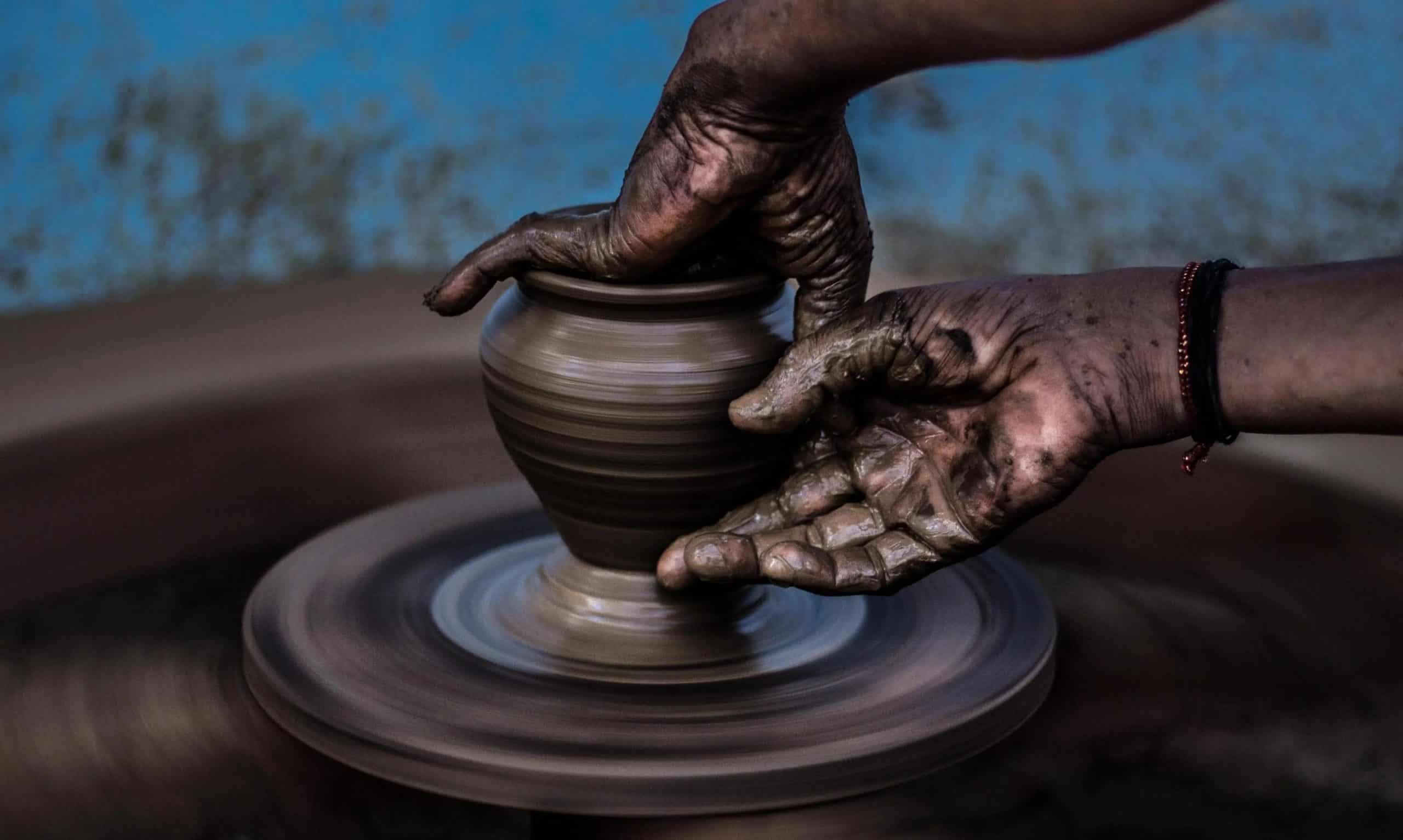
Because when it comes to style, black is always in.
An Ancient Craft
The craft of pottery can be traced back to the start of human history. One of the oldest known crafts, pottery has exceeded mere utility to become a symbol of artistic expression and cultural heritage. It is a testament to human ingenuity and creativity, rooted in history and steeped in tradition. Among the myriad forms of pottery India is famed for, black pottery from Uttar Pradesh and Manipur stands out for its unique techniques, aesthetic allure, and cultural significance.
The Legacy of Black Pottery in Uttar Pradesh
The black pottery of Nizamabad in Uttar Pradesh has a history as captivating as its glossy, silver-etched designs. Though its origins trace back to the Kutch region of Gujarat, this craft gained prominence during the Mughal era under the reign of Emperor Aurangzeb, when skilled potters migrated to Nizamabad, enriching the region’s artistic tapestry.
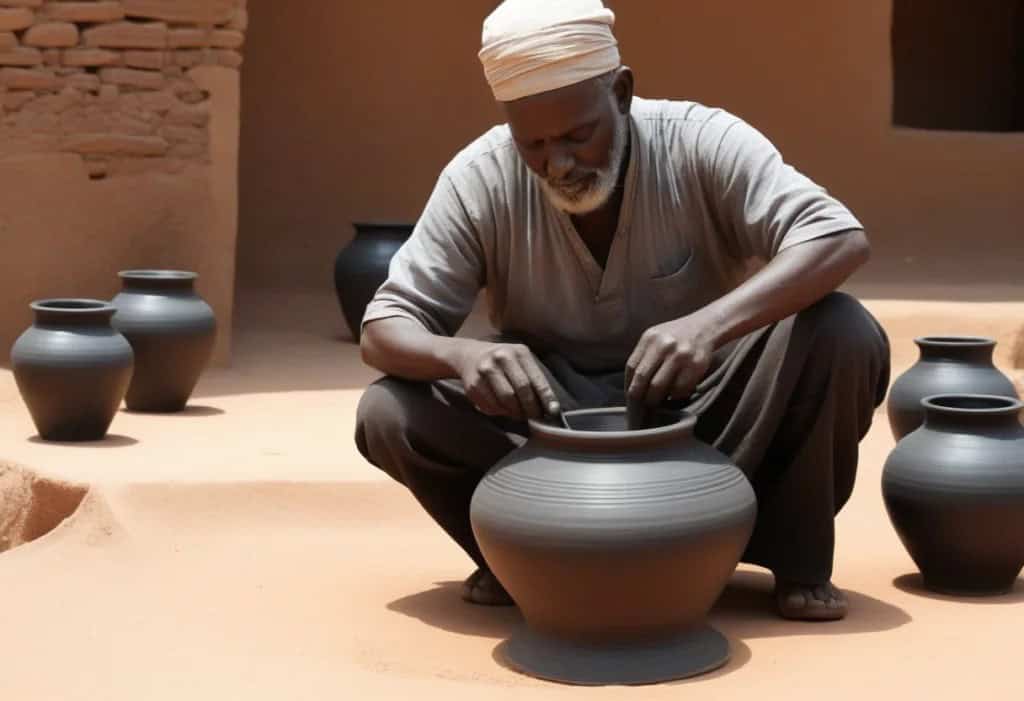
In December 2015, Nizamabad black pottery earned its Geographical Indication (GI) tag, cementing its status as a cultural and artistic treasure. This GI recognition ensures the craft’s authenticity and protects it as a regional identity.
The creation of Nizamabad black pottery is a meticulous blend of tradition and innovation. Clay sourced locally is first shaped into elegant forms and then fired in kilns. A striking transformation occurs during the smoking process, where rice husks are burned, enveloping the clay in thick smoke that imparts its signature black colour.
Designs, ranging from geometric patterns to floral motifs, are etched using sharp twigs. The finishing touch involves rubbing silver powder made from zinc and mercury onto the designs, resulting in a gleaming, silver-on-black contrast. Mustard oil is used at various stages to add a glossy finish, enhancing the pottery’s aesthetic appeal. Around 200 families in Nizamabad are engaged in this craft, with their products finding homes as far afield as Russia, Australia, and beyond. The demand for these intricate pieces, including vases, plates, and decorative items, underscores the universal appeal of Indian artistry.
Manipur‘s Enchanting Black Pottery
Longpi, cradled in the picturesque hills of Manipur, is home to a distinctive pottery tradition practised by the Tangkhul Naga tribe. Known as Longpi Hamlei pottery, this craft is a confluence of heritage and utility. Unlike conventional pottery, it is made without a potter’s wheel, showcasing the artisans’ unparalleled skill.
The women of the “Loree Hamlei” Village Pottery Collective have revitalised this age-old craft, making it accessible to contemporary markets. Their handcrafted cookware and decor items have gained popularity in India and abroad, bridging the gap between rustic tradition and modern design.
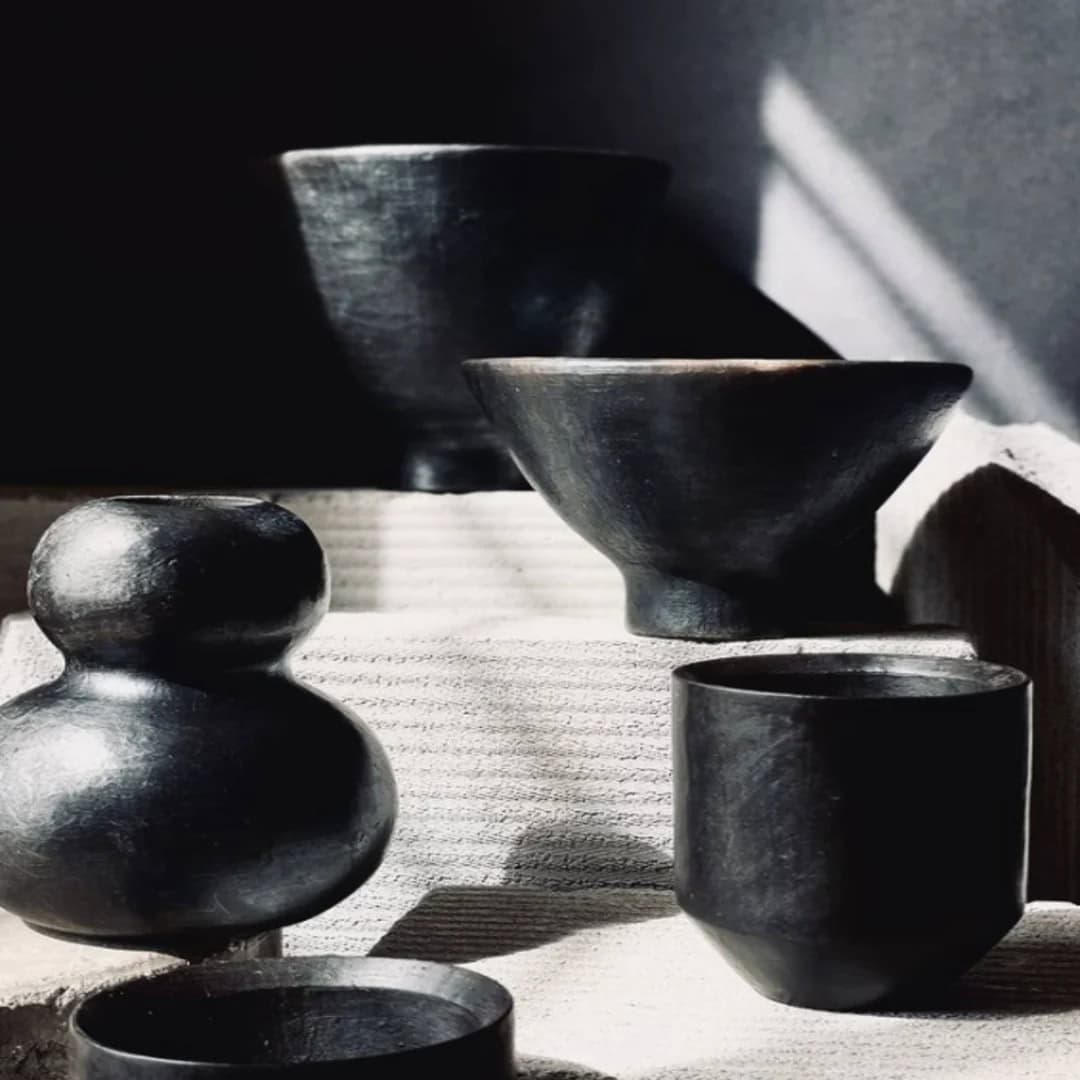
The raw materials used for Longpi pottery, weathered and serpentine rocks, are exclusive to the region. These rocks are ground into powder, mixed with water, and kneaded into a clay-like consistency. Unlike the mechanised process of wheel pottery, Longpi pottery relies entirely on hand-moulding techniques using wooden boards and traditional tools.
Once shaped, the pottery is dried and fired in open bonfires at over 1200 degrees Celsius. The pieces are then polished with machee leaves, which impart a smooth finish and natural sheen. Finished products often feature cane accents around handles and knobs, adding to their charm.
Historically, Longpi pottery was reserved for the royals and elite, serving as an essential element in rituals and festivities. Today, it is a cherished part of Manipuri households, used for cooking during special occasions. From teapots and kettles to decorative bowls and trays, Longpi pottery embodies a blend of practicality and elegance.
The Timeless Craft of Kangra Black Pottery
The black pottery of Kangra, Himachal Pradesh, is a tradition steeped in history, artistry, and sustainability. This craft, believed to have links to the Harappan civilisation, has been passed down through generations, embodying a seamless blend of functionality and aesthetic appeal.
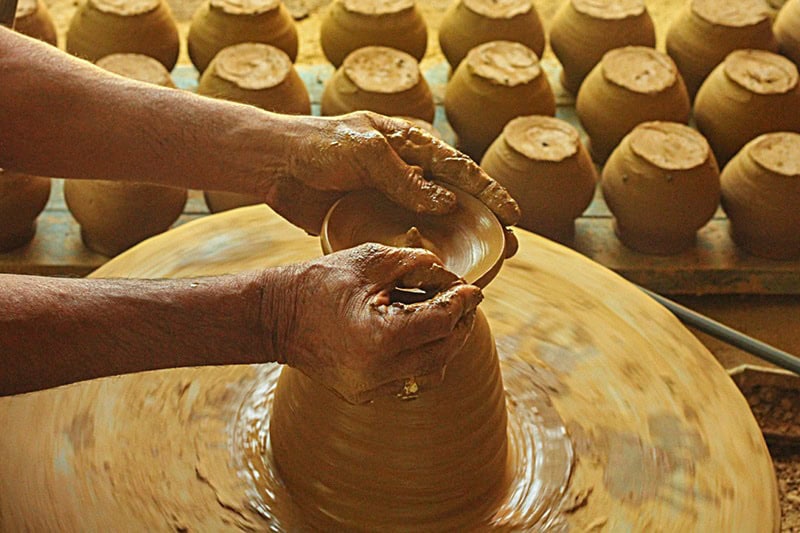
The defining characteristic of Kangra black pottery is its deep, velvety-black finish, achieved through an ancient firing technique that restricts oxygen flow, allowing the clay to absorb carbon and develop its signature hue. Artisans source fine clay from the riverbanks, meticulously shape each piece using the potter’s wheel, and etch delicate designs inspired by nature, mythology, and geometric patterns. The pottery is then placed in an enclosed kiln, where wood and dried leaves are burned, creating a low-oxygen environment that enhances the darkened effect.
Beyond its striking appearance, Kangra pottery is known for its durability and eco-friendliness, making it a sustainable alternative to modern ceramics. Traditionally used for storing water, grains, and cooking, it remains valued for its heat-retention properties, a feature that continues to attract admirers seeking both function and artistry.
For many years, Kangra’s black pottery remained an obscure craft, with only a handful of artisans preserving the tradition. However, the growing global interest in handmade, sustainable décor has sparked a renewed appreciation for this exquisite pottery. Designers and luxury brands are now incorporating Kangra’s minimalist yet intricate designs into modern interiors, giving the craft a fresh lease of life. As a result, what was once confined to Himachali households and local markets is now making its way into homes and galleries across India and beyond.
Azamgarh Black Pottery: Forgotten Art
While Nizamabad’s black pottery enjoys widespread recognition, Azamgarh in Uttar Pradesh harbours a lesser-known yet equally captivating variation of the craft. Unlike Nizamabad’s silver-inlaid motifs, Azamgarh pottery is distinguished by its deep, engraved patterns, which create an extraordinary interplay of texture and form.
The process of crafting black pottery in Azamgarh follows a time-honoured tradition. Locally sourced clay is shaped into elegant forms, ranging from storage vessels and tableware to decorative items, before being left to dry naturally. The defining step in this craft is the firing process, which mirrors the reduction technique used in other black pottery traditions. Artisans place the pieces in enclosed kilns, where burning organic materials create thick smoke, infusing the clay with its rich, blackened hue.
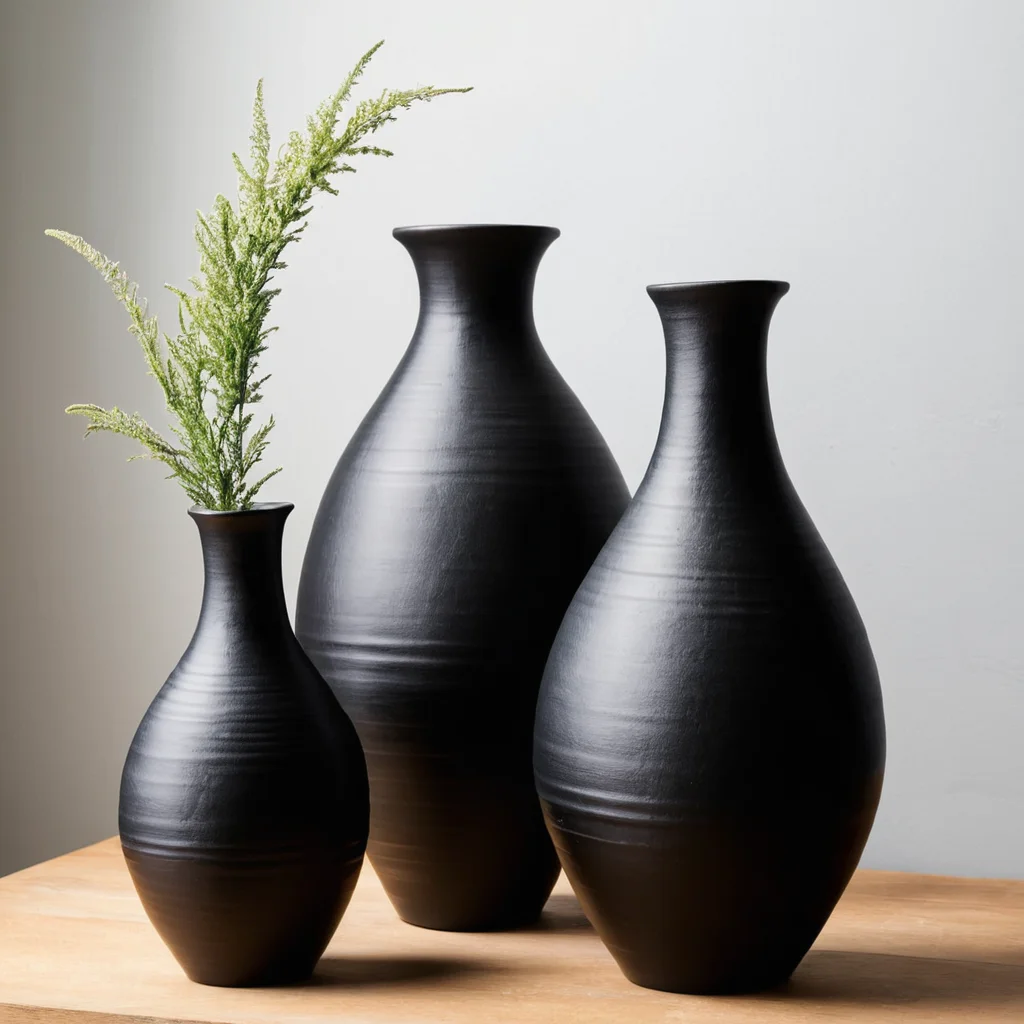
What sets Azamgarh’s black pottery apart is its intricate detailing. Using simple yet precise tools, artisans etch geometric and floral patterns directly onto the surface, allowing the designs to stand out against the deep black background. The finished pieces are then polished with natural oils, enhancing their matte texture and timeless elegance.
Despite its artistic merit, Azamgarh’s black pottery has struggled to gain mainstream recognition. The craft, once a thriving trade, now faces challenges from commercially produced ceramics and dwindling artisan numbers. However, renewed interest from craft revival initiatives and design houses is beginning to shed light on this hidden gem. With a growing demand for authentic, handcrafted décor, Azamgarh’s black pottery is slowly finding its place in contemporary homes, celebrated for its rich heritage and artistic refinement.
Black Pottery Today: Bridging Tradition and Modernity
The black pottery of Uttar Pradesh and Manipur is a testament to India’s rich craft heritage. Its journey from traditional village homes to global markets reflects the resilience and adaptability of Indian artisans. However, the survival of this craft requires continued patronage, innovation, and recognition.
The Geographical Indication tag for both Uttar Pradesh and Manipur black pottery is a step toward preserving their unique identities. However, challenges remain. Artisans often face issues like insufficient funding, lack of awareness, and competition from mass-produced alternatives. Government initiatives, collaborations with design houses, and consumer support are crucial for ensuring the survival of these time-honoured crafts.
By choosing black pottery, we not only celebrate the intricate artistry of Indian craftsmen but also contribute to sustaining an ancient tradition that continues to evolve, one piece at a time. Let these timeless creations grace your home, serving as a reminder of India’s unparalleled cultural and artistic heritage.
Where to Buy
Visitors can explore the heart of these crafts in their places of origin, Nizamabad in Uttar Pradesh and Longpi in Manipur. For urban buyers, design firms like Objectry in Delhi curate and sell exquisite black pottery pieces, offering a slice of tradition with a contemporary touch.
Read more – Discover Your India



